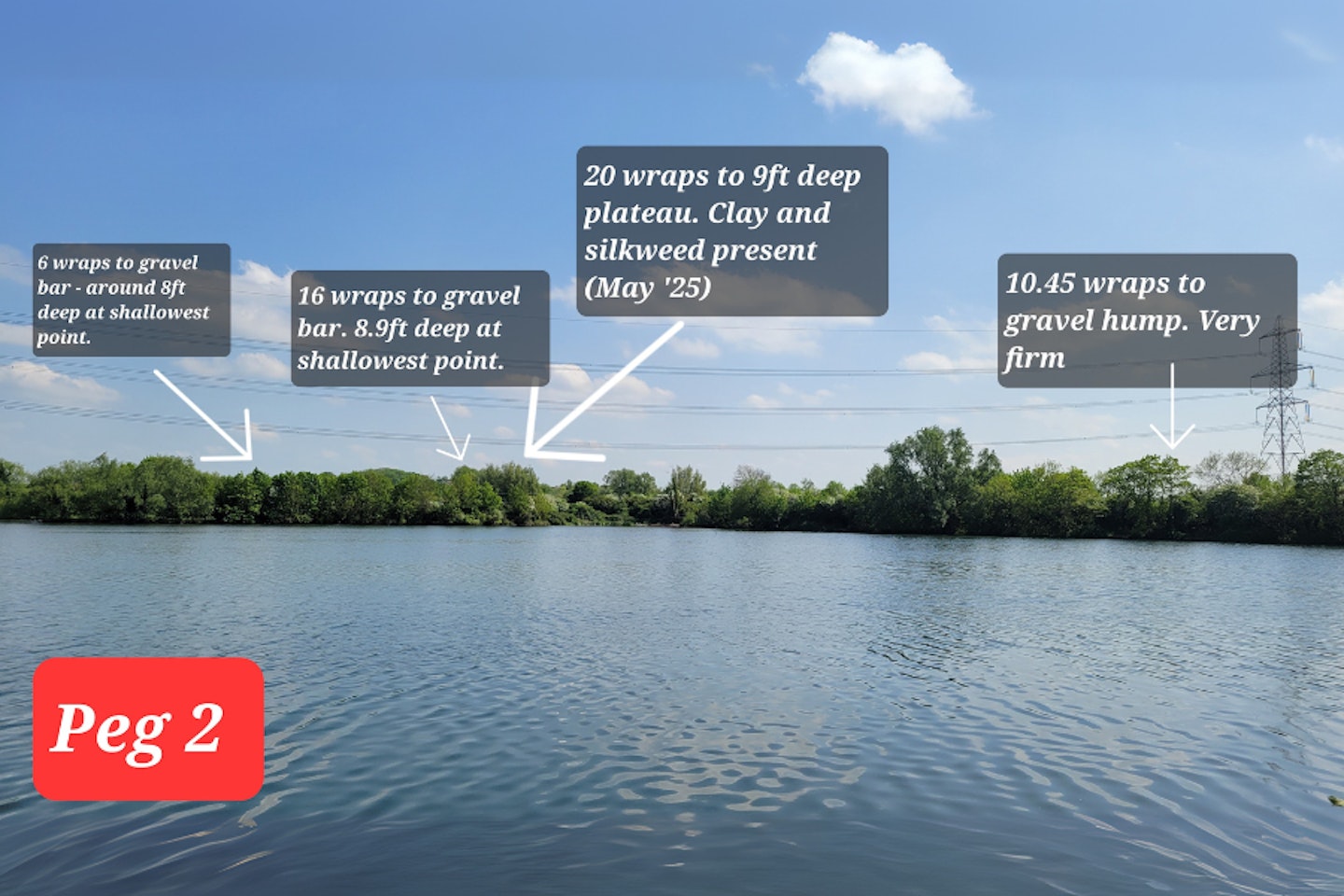One of the most common mistakes anglers make is to assume that, once they’ve identified the right lake and then located the fish, the hard work is over.
In reality, that’s only half the battle. The second half – and often the difference between blanking and building a memorable session – is knowing how to present your hookbaits in the best possible area of the swim.
Carp, tench and bream don’t feed randomly on the lakebed. They will have areas that they regularly frequent and will show a clear preference for feeding on some features over others, even if those spots are in the same swim.
Dynamite Baits-backed big-fish expert James Champkin knows this all too well, having learned many important lessons on the subject down the years.
Avoiding the common pitfalls of feature-finding will help you build a clearer picture of the lakebed, and ultimately catch you more fish.
HERE IS OUR PICK OF THE BEST SPECIMEN RODS IN THIS BUYERS GUIDE.
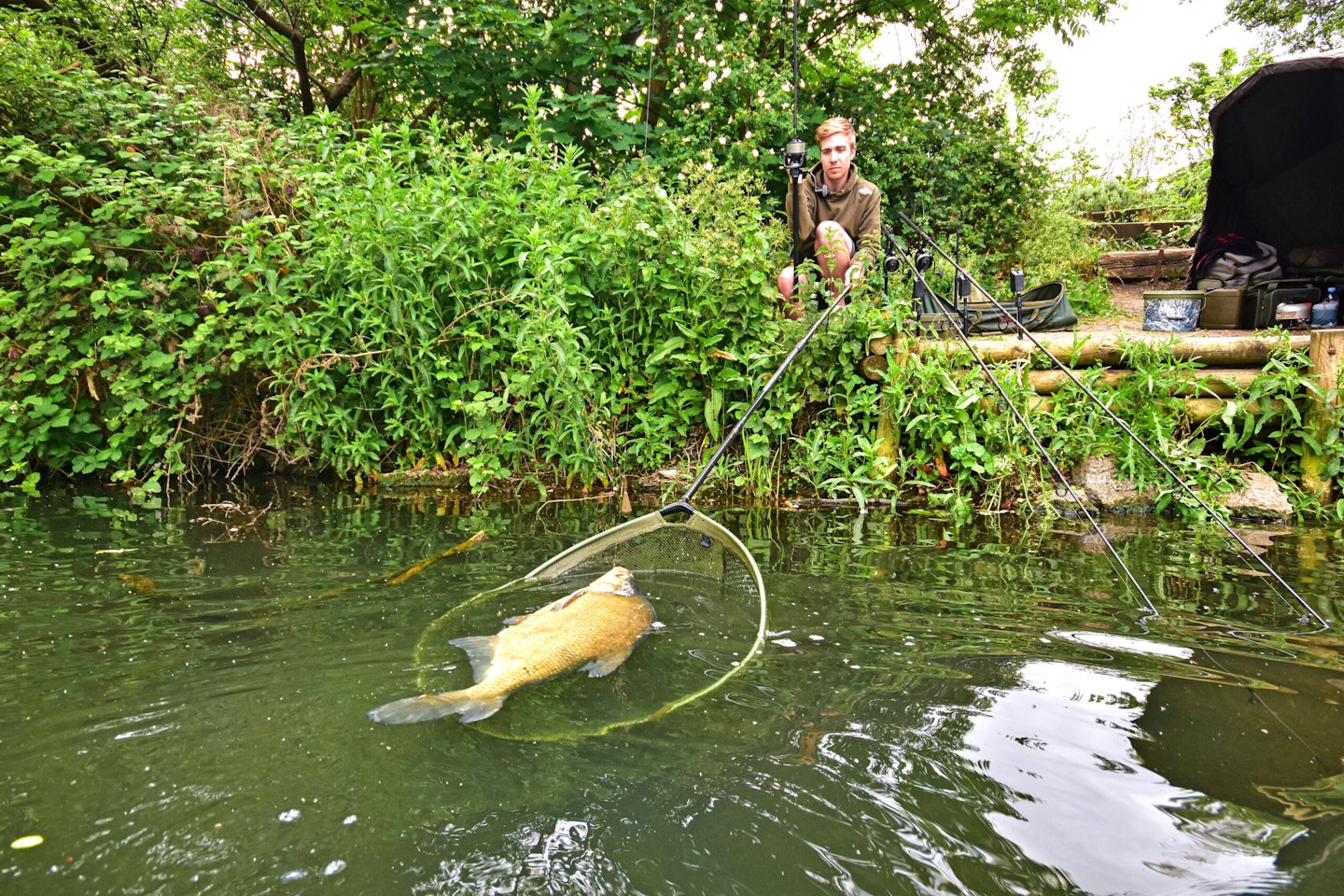
Invest time mapping
The truth is that most anglers get it wrong, simply because they don’t spend enough time plumbing or mapping their swim. They make just a few casts, find a ‘clear’ spot, and start fishing.
Sometimes they get lucky, but more often than not they’re fishing areas of the lakebed on which the fish don’t naturally feed. True feature-finding takes time and patience to fully understand depth changes, substrate variations, and subtle hotspots.
By learning to read the underwater landscape, you’re effectively turning an invisible world into a mental map. You start to recognise highways where fish patrol, and dinner tables where they feed.
This doesn’t just improve your catch rate, it also builds a level of confidence that never disappears. When you know your rig is presented effectively on the right spot, you can fish with patience and focus, rather than be constantly second-guessing yourself.
USE THESE HELPFUL TIPS TO TARGET A BIG TINCA.
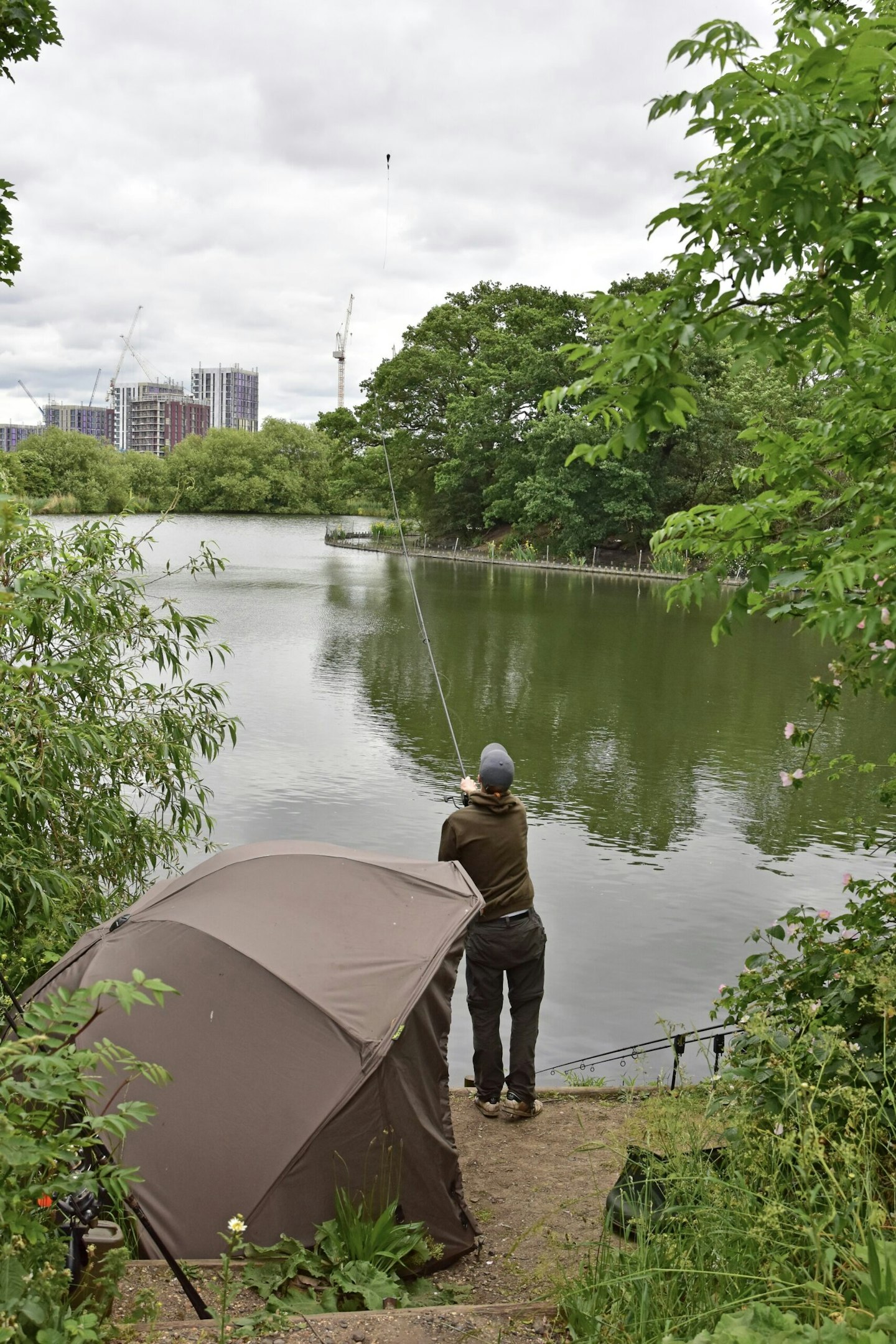
Retrieve slowly
A lead running over gravel, clay, silt, or weed will transmit a different feel through the rod each time, but many anglers confuse them. This can be caused by pulling the lead back too quickly.
Rushing your retrieve can cause you to miss small but productive details such as gravel seams, clay patches, or slight depressions and misinterpretation can lead to poor bait presentation and fewer fish on the bank.
By slowing down the retrieve and easing the lead back gently, you’ll notice the subtle changes and feel the vibration of gravel, the sticky resistance of silt, or the sudden “clean” feel of a clear patch amid weed.
Once the lead touches down, pause for a moment. Then retrieve slowly, feeling every few inches. You can slow the pull-back of the lead by grasping the braid between your fingers, rather than using the reel or rod-tip. The detail you pick up will transform how accurately you can read the lakebed.
FOUND THE FEATURES? NOW SET UP CAMP WITH THE BEST FISHING BIVVIES.
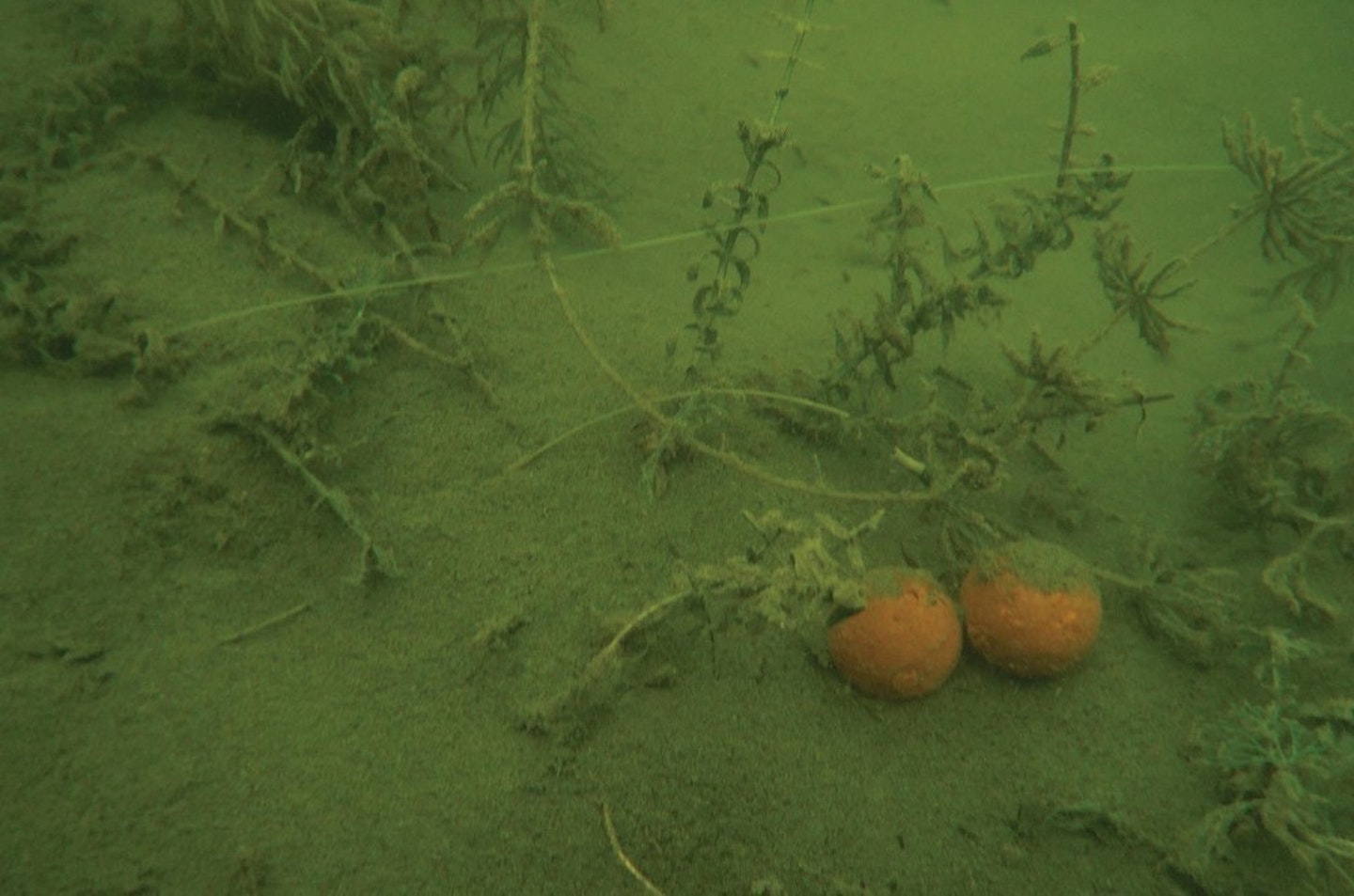
Use the right lead
A firm drop on the lead doesn’t always mean there is a clear bottom, as things such as eelgrass and silkweed can still be present, despite this initial positive reading.
Pulling a plain lead over silkweed may also be misleading. An area can feel clean and smooth, but the lead is simply gliding across the top of the weed.
A grappler-style lead is essential when you want to get precise readings. Fitted with prongs, it picks up debris from the lakebed as you retrieve it. This tells you more than just the substrate, and it reveals exactly what lies on top of it.
A grappler pulled through silt might come back peppered with bloodworm, while one dragged over gravel could return with tiny snails or fragments of mussel. Just as importantly, it will also highlight if your chosen spot is choked with weed, covered in leaves, or littered with twigs and other debris.
IF YOU WANT TO CATCH BIGGER FISH, MAKE SURE YOU FOLLOW THESE TIPS...
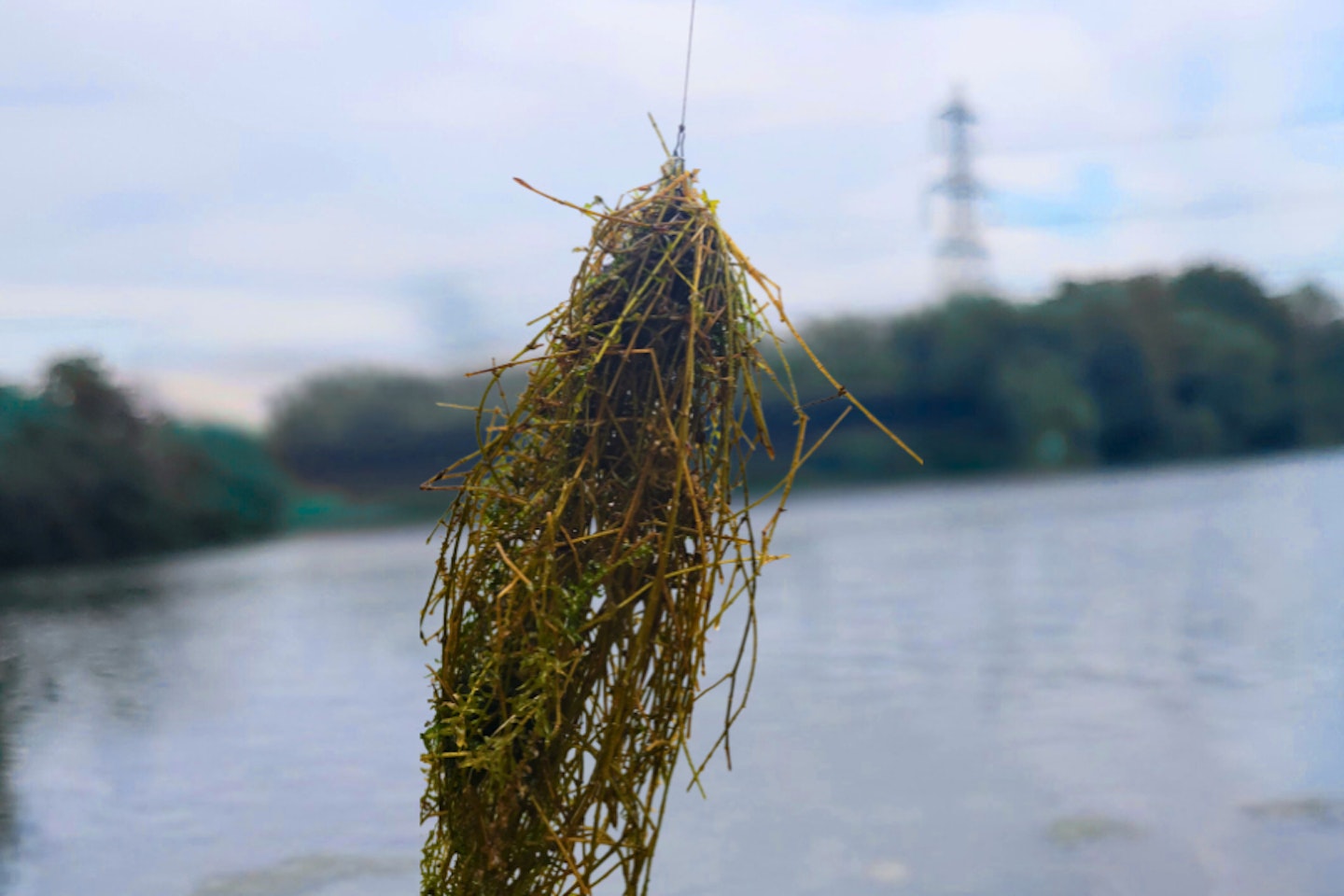
Don’t rely on just one tool
Using just a marker float and probe lead, or just a castable sonar unit like a Deeper can, sometimes, leave ‘blind spots’ in your understanding. It’s best to combine these tools with a grappler lead to build up the clearest, most accurate swim map that you can.
Think of using each tool as adding a layer of insight. Sonar helps with general feature location and the extent of the weed, while the marker float finds the specific range and identifies the best far-bank marker to cast towards.
A probe lead is great for working out substrate firmness and smoothness, and a grappler lead analyses the condition of the substrate’s surface.
Working all four in sequence removes guesswork and ensures you map every dimension of the swim. It’s this completeness that turns intuition into certainty.
THE BEST SPOD RODS CAN OFTEN DOUBLE AS MARKER RODS.

Record your findings
If you don’t write down or sketch your swim map, you’re likely to forget key details by your next trip, wasting all the effort that you’ve put in.
Even a simple sketch or annotated photo acts like a memory flashcard. Take note of distances in yards or wraps, far-bank markers to cast towards from each swim, depths, substrate types, and weed levels.
If you don’t write it down, then even a quick photograph on your mobile phone, with added labels showing swim details, can save many fruitless hours during future sessions.
Over time, these records become personal ‘swim encyclopaedias’, making your fishing easier and more reliable, not to mention more productive!
THE BEST CARP REELS ARE SUITED TO CASTING BIG LEADS WHEN FEATURE FINDING.
